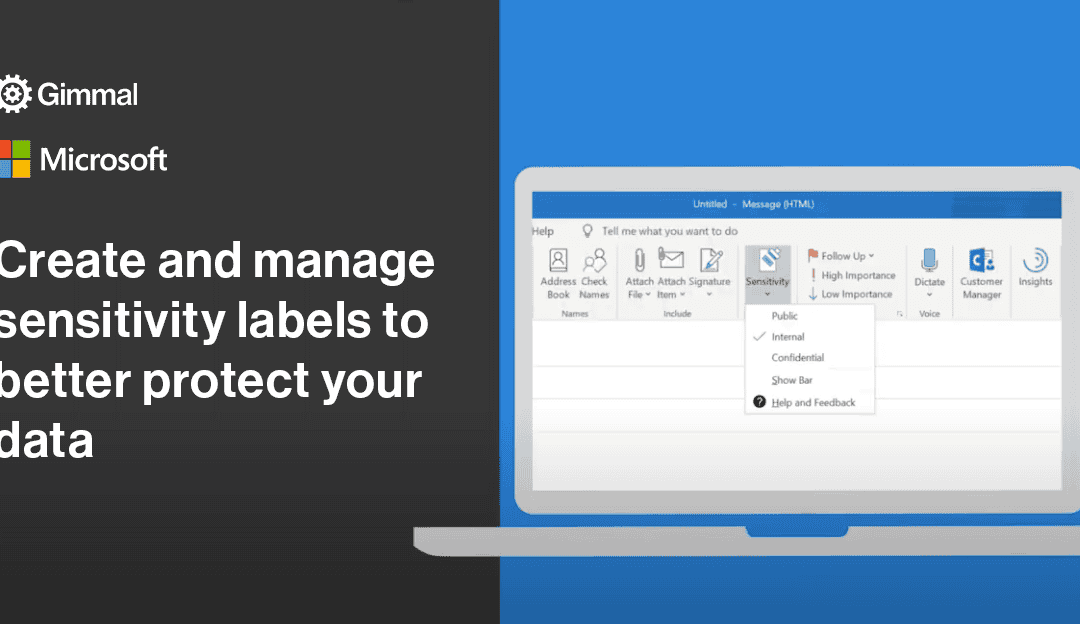Designing Our Digital Future: A Comprehensive Guide to Digital Transformation

Written by Gimmal Product Marketing
Digital transformation often conjures images of cutting-edge technology implementations, AI-driven processes, and sleek, futuristic office spaces. While technology is an essential component, successful digital transformation is more about people and processes—ensuring that organizations, agencies, and teams move forward together toward more connected, efficient, and adaptive ways of working. Below is a comprehensive exploration of the considerations, challenges, and best practices that can guide you in designing our digital future.
Table of Contents
-
- Introduction: Beyond Technology
- Digital Ambition vs. Digital Transformation
- Three Key Concepts: Digitization, Digitalization, and Digital Transformation
- The Five Phases of Transformation
- 4.1 Ambition
- 4.2 Design
- 4.3 Deploy
- 4.4 Operationalize
- 4.5 Optimize
- Physical vs. Electronic Records: Do’s and Don’ts
- Change Management: Building People-Focused Transformation
- Key Takeaways and Final Thoughts
YouTube Video: “Designing our Digital Future: A Comprehensive Guide to Digital Transformation” with Momentum
1. Introduction: Beyond Technology
For at least a decade, “digital transformation” has been at the forefront of organizational priorities. Many companies and government agencies know they need to transform, but often get hung up on which new platform to buy or how to implement advanced AI software. What often goes underemphasized is the human side of these changes—the leadership vision, day-to-day processes, and psychological mindset needed to make meaningful improvement happen.
A useful analogy is renovating an older home. You might have a 1940s house that needs both cosmetic and structural upgrades. Some projects you can take on yourself, others are more urgent and require a professional crew, and inevitably, things crop up that you did not foresee—like a leak in the ceiling or outdated wiring behind the walls. The same holds true in digital transformation. It can get messy, it is rarely on time, and it can definitely be over budget. But if managed thoughtfully, it creates something far more functional, modern, and suited to your needs.
2. Digital Ambition vs. Digital Transformation
A critical question: are we talking about “digital transformation” or “digital ambition”? Ambition speaks to the excitement and vision of the future—“We want a sleek CRM,” “We need an AI solution,” or “We’ll cut costs and become fully paperless in six months.” Transformation, meanwhile, is all about the actual steps taken to make real change happen. Ambition alone does not accomplish anything unless it’s translated into an actionable plan with clear objectives, realistic timelines, and dedicated resources.
When you first buy an old home, you might dream of opening the kitchen, building a new patio, and repainting all the walls. Do you have the capacity, budget, and know-how to do all that at once? Probably not. You need to balance short-term wins with a longer vision of what is ultimately possible—and some aspects may require specialized help. This mindset also applies to digital transformation: balance your ambition with a firm understanding of your constraints and a plan for incremental progress.
3. Three Key Concepts: Digitization, Digitalization, and Digital Transformation
Before diving into the stages of transformation, it helps to clarify the difference between three similar but distinct concepts:
- Digitization: Converting physical information (like paper documents) into a digital format, often by scanning. It changes the medium but does not alter the fundamental process by which people interact with that information.
- Digitalization: Leveraging digital technologies to modify business processes. This might involve introducing electronic workflows or automating approvals so teams can access and handle documents far more efficiently.
- Digital Transformation: The broad, strategic revamp of an organization’s entire approach to tasks, culture, and business processes. Transformation goes beyond updating a single workflow to rethinking how each department, employee, and piece of data contribute to an integrated, future-forward environment.

You cannot move into digitalization without first digitizing records, but digitization alone does not guarantee you are fully transforming. Nor does every digitized record need to become a fully digitalized process. Understanding which records and processes truly need digitalization is vital in avoiding wasted effort.
4. The Five Phases of Transformation
A useful framework for structuring digital transformation involves five phases: Ambition, Design, Deploy, Operationalize, and Optimize. These phases are not strictly linear; often you may revisit previous steps as conditions evolve and new technologies emerge.
4.1 Ambition
Ambition sets the tone for why you are pursuing transformation. It is the rallying cry that excites teams and garners initial buy-in from leadership. However, ambition must be paired with a clear purpose:
- Why are we doing this? Is it cost savings, better customer service, or regulatory compliance?
- What are our goals? Try to be specific: “reduce approval processing times by 40%” or “cut physical storage costs by 25%.”
- How will we achieve it? Outline potential resources, skill sets, and outside expertise you might need.
- Who needs to be involved? Identify decision-makers, champions, subject-matter experts, and stakeholders.
Being honest and transparent about your organization’s readiness, capacity, and motivation is key. People may say they are “open to change,” but operational realities—like limited budgets or entrenched paper-based habits—could tell a different story.
4.2 Design
Design is about spinning ambition into specific processes and workflows. During this phase, you map out which technologies to include and how you will integrate them, but you also decide who is responsible for making decisions, overseeing tasks, and informing the rest of the organization. A few key points:
- Find Ambassadors and Amplifiers: Bring on individuals who can champion these changes across departments. Introverts or behind-the-scenes experts may need vocal, well-connected allies in leadership.
- Define Roles and Responsibilities: An executive sponsor might only need high-level updates, whereas a project manager or task owner will be heads-down in daily details.
- Assess Strengths and Weaknesses: Conduct a SWOT analysis (Strengths, Weaknesses, Opportunities, Threats) to see what you do well in-house and where you might need outside help.
- Acknowledge Unanticipated Issues: Just as a hidden ceiling leak can derail a home renovation, unanticipated data ownership disputes, compliance changes, or staff turnover can disrupt your design. Build in contingency plans.
4.3 Deploy
Deployment is where planning meets reality. This is often messy—tools may fail, timelines slip, and budgets fluctuate. But if you included the right people and plans from the start, many of these issues become manageable.
- Start Small and Celebrate: A key best practice is to aim for incremental wins. When a process improvement works, celebrate it, share it, and recognize the teams involved. Small morale boosters help people stay engaged through inevitable setbacks.
- Record Lessons Learned: Too often, organizations fail to document what went right or wrong until it is too late. Capture knowledge as you go, noting the decisions made and why, the obstacles encountered, and how they were handled.
- Progress Over Perfection: Don’t let the fear of imperfection stall your progress. It is better to deploy a minimum viable process that can be refined, rather than over-plan and never implement.
4.4 Operationalize
After your pilot or initial rollout, you need to figure out how to replicate what worked. During this phase, you look for ways to scale, standardize, and integrate these digital solutions across the enterprise or agency.
- Avoid Silos: It’s easy to slip into isolated “champion” groups that flourish but fail to extend the new processes enterprise-wide. Make it a priority to connect each department’s needs and systems.
- Document the Realities vs. the Plan: Compare your actual deployment results to the original strategy. Which aspects worked better than anticipated? Which flopped?
- Embrace Failure: Mistakes are inevitable. If you treat them as data points rather than disasters, you can systematically strengthen your operations.
4.5 Optimize
In the final phase, you refine and future-proof what has become your “new normal.” As new regulations emerge, technology advances, or priorities shift, you adjust accordingly.
- Shedding Outdated Processes: Some processes that were once central to your success may no longer be relevant (or safe from a compliance standpoint). Be ready to let them go, even if there is sentimental or organizational inertia.
- Focus on Data and AI: Once you have standardized digital processes, advanced analytics and AI can become key enablers. But only if your data is clean, accessible, and well-governed.
- Stay Flexible: Digital transformation is never truly “complete.” Think of it as a continuous process that evolves alongside your strategic goals and your users’ expectations.
6. Change Management: Building People-Focused Transformation
Beyond the technical details, change management lies at the heart of transformation. People fear change for many reasons—loss of job security, confusion over new responsibilities, or simply habit. To address these concerns:
- Over-Communicate
Communicate your goals and the benefits of transformation more times and through more channels than you think you need. People rarely grasp the full message the first time they hear it. - Celebrate Every Win
Even small victories, like a single department adopting a digital approval workflow, give teams a tangible success story to cling to. - Build a Continuous Feedback Loop
Provide ongoing training, gather user feedback on new systems, and keep refining processes as you learn. - Set Realistic Expectations
Let everyone know that transformation is a journey and that things will continue to evolve. This discourages the mindset of “But we’ve always done it this way!”
7. Key Takeaways and Final Thoughts
Designing and implementing a digital future is not a one-off initiative. Rather, it is a continuous process of aligning ambitions with real-world constraints, emphasizing collaboration, and making room for scalability and future needs. The engineering of your updated processes, teams, and technologies requires balancing rigid structure (“we need compliance!”) with creativity and adaptability (“we found a new solution that changes our approach!”).
Summarizing the Journey
- Ambition: Understand why you want to transform and what tangible objectives you hope to meet.
- Design: Bring the right people to the table, define clear roles, and use frameworks such as SWOT analysis to build feasible roadmaps.
- Deploy: Launch incrementally, expect the unexpected, document your experiences, and keep your eyes on progress over perfection.
- Operationalize: Standardize successful initiatives, reduce redundancy, and ensure robust documentation for the next phase of scaling.
- Optimize: Periodically revisit processes, shed outdated methods, track ROI and user satisfaction, and remain open to ongoing change.
Above all, remember that digital transformation thrives on people’s belief in its value. When you tie technology decisions to real human needs—saving time, increasing productivity, reducing frustration, improving collaboration—you set the stage for sustained success. Sure, technology is the engine, but your workforce is the fuel driving it forward. Embrace the ambition, build a solid design, deploy carefully, operationalize collaboratively, and optimize at every opportunity. That is how we design our digital future.
Ready to Learn More?
Get started by filling out the form below, and let us help you leverage your existing infrastructure with minimal disruption. Whether you’re looking for ease of use, a single platform solution, or guidance on information governance, we’re here to assist.
Related Content

Podcasts
Podcasts Expert Interviews and Best Practices for Modern Information Governance 23 SEPT Navigating AI and Information Governance Part II – Insights from Gimmal & Office Labs Jason Coggins (Gimmal, UK & Europe) and Mike Nicholas (Office Labs) sit down for a...
Gimmal and Morae: A Game-Changing Partnership in Information Governance
Gimmal and Morae: A Game-Changing Partnership in Information Governance Aug 20, 2025 The information governance (InfoGov) landscape is evolving at a rapid pace, and the recent acquisition of Gimmal by Morae marks a pivotal moment for our industry. In a recent episode...
Navigating AI and Information Governance – Insights from Gimmal & OfficeLabs
Navigating AI and Information Governance – Insights from Gimmal & OfficeLabs Jul 8, 2025 In a recent episode of the Gimmal Podcast, Jason Coggins (Gimmal, UK & Europe) and Graham Bidwell (OfficeLabs) sat down for a deep dive into the fast-evolving worlds of...
Stop Hoarding: Data Retention & Deletion Imperatives for Risk Mitigation
Stop Hoarding: Data Retention & Deletion Imperatives for Risk Mitigation Jun 11, 2025 At Gimmal, our mission is to help organizations effectively manage information, reduce risk, and ensure compliance in an ever-evolving regulatory landscape. In a recent webinar,...

Gimmal Extends Microsoft Purview Information Protection Solution for Enhanced Sensitive Data Labeling and Governance
Thursday, June 20, 2024 – HOUSTON, TX – Gimmal, the market’s only end-to-end information governance platform, announced today the launch of their Microsoft Purview Sensitivity Labels solution to extend and enhance sensitive data classification for unstructured...

